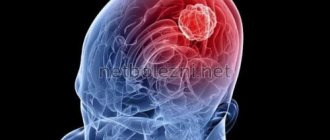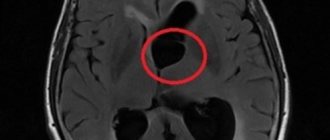All infections are dangerous to varying degrees, and even more so are neuroinfections. The most dangerous neuroinfections are those that affect the brain. There can be no “frivolous” diseases here. Every pathogen that can cross the blood-brain barrier poses a huge danger to human health and life.
Types of Brain Infections
The variety of neuroinfections affecting the brain can be divided into five groups:
- bacterial;
- parasitic;
- viral;
- prion;
- fungal.
Common Causes
At the initial stages of diseases, it is very difficult to detect them, since most of them occur without visible symptoms, or are manifested by minor pain.
The following internal and external causes can lead to the disease:
- severe infections that entered through wounds, insect bites, respiratory tract or blood/lymph from other infected areas of the body;
- trauma to the skull;
- chemical poisoning;
- excessive exposure to radiation;
- adherence to bad habits, systematic intoxication with alcohol, tobacco, drugs or certain medications;
- poor quality of food;
- genetic predisposition to brain destruction;
- congenital disorders.
Treatment of ischemic cerebral disease
Therapy for cerebral vascular ischemia consists of a conservative (medicinal) treatment method and a surgical one. The first method is aimed at improving vascular tone and blood pressure. The doctor will adjust the patient’s diet to eliminate the risk of the formation of atherosclerotic plaques and blood clots. But if they are already present, additional medications are prescribed in addition to the diet. In most cases, it is hypertension and atherosclerosis that are the root cause of the development of ischemia.
Drug treatment consists of the following:
- antihypertensive, reducing blood pressure in the vessels;
- lipid-lowering drugs (statins), which reduce cholesterol deposits;
- antiplatelet, blood thinning, preventing the formation of blood clots;
- nootropic, normalizing brain functioning;
- antioxidant, improving oxygen supply to tissues;
- anxiolytics and sedatives that reduce the manifestations of hyperexcitability.
Chronic ischemia requires more in-depth diagnosis, as well as radical treatment. Surgery is often necessary:
- stenting of the carotid arteries - expansion of the narrowing site using a metal tube;
- carotid endarterectomy - removal of plaque from the carotid arteries.
If the cause of chronic vascular disease is a blood clot or plaque, then during surgery they will be removed, which allows the patient to return normal vascular tissue, which will supply the brain with oxygen in full.
Neurologists advise not to overwork, get enough sleep and lead a healthy lifestyle, since discirculatory encephalopathy does not result in a quick recovery without following a diet and changing lifestyle.
Rehabilitation after surgery
Further rehabilitation measures consist of the following stages:
- Rehabilitation in a hospital setting during the patient’s hospitalization.
- Rehabilitation in a hospital department or in a sanatorium after the end of the acute period of illness.
- Outpatient clinic or home.
Types of diseases
In clinical practice, and then in theory, a huge number of pathologies leading to malfunctions of the central nervous system were identified. The most common of them can be highlighted in a list:
- Vascular aneurysm. It is a pathogenic expansion of the vascular wall, which loses elasticity and risks rupture, leading to internal hemorrhage. It is very difficult to save a person in such cases.
- Atherosclerosis. Appears when there is micro-trauma to the vascular wall, at the site of damage a cholesterol plaque forms, and then a blood clot. The lumen of the blood channel becomes clogged, blocking the path to oxygen and microelement nutrition of neurons, which is why they begin to die.
- Stroke. A vascular anomaly that often develops in old age. Leads to the death of areas of the brain (BM) in which blood circulation is disrupted. In the hemorrhagic form of the attack, the canals rupture, leading to internal hemorrhage, and it is very difficult to save the patient. Ischemic stroke is less dangerous but more common.
- Alcoholic encephalopathy. Systematic drinking of alcohol leads to gradual, non-renewable death of neurons, as a result of which a person loses cognitive abilities, intelligence, and psycho-emotional stability.
- Intracranial hypertension. It manifests itself as high intracranial pressure caused by the growth of a tumor, cyst or aneurysm inside the head.
- Malformation. Congenital defect in the structure of the vascular network.
- Alzheimer's disease. Excessive production of a pathogenic protein enzyme that accumulates in brain tissue and destroys nerve cells. Next, the functioning of internal systems and organs fails, after which death occurs.
- Various tumors. Neoplasms from aggressively growing cells of the body.
- Epilepsy. Impaired bioelectrical function of the brain, as a result of which periodic convulsions develop.
- Hydrocephalus. It is characterized by impaired exchange of cerebrospinal fluid, which begins to accumulate in the intracranial cavities. There is constant pressure on the brain, which causes its functioning to suffer.
The signs of all these diseases are largely similar, if you do not take into account specific manifestations, which almost do not appear in the early stages.
Classification of cerebral ischemia
The deterioration of vascular activity occurs with varying degrees of severity, therefore two types of the disease are distinguished:
- Acute
, characterized by the suddenness of the onset of symptoms and the minimum period of development of the disease (stroke, cerebral infarction). - Chronic
, occurs as a result of the slow development of brain dysfunction due to diffuse (extensive) or small focal damage to brain tissue in conditions of prolonged insufficiency of cerebral blood supply. In this condition, patients develop symptoms gradually, with further progression.
Vascular pathology occurs not only in adults, but even in newborns due to a lack of oxygen during the mother’s pregnancy.
When is it time to go to the doctor?
Only a medical specialist can understand what is happening. If discomfort in the head, neck or upper back appears sporadically, for example, when the weather changes, and then disappears without a trace for a long time, there is usually no cause for concern. If you suspect a cold, headache from fatigue, physical or mental stress, just rest. But if you experience the following symptoms, you should definitely go to the doctor:
- previous head injuries with and without complications;
- feverish condition;
- blurred perception;
- muscle tension in the neck or back of the head;
- sudden painful shootings;
- loss of sensation in the arms or legs;
- convulsions;
- problems concentrating your eyes or thoughts;
- bulging of the fontanelle in the newborn period.
Even short-term loss of vision or hearing is also a serious reason for medical intervention.
Symptoms of cerebral ischemia
In the case of an acute process (hemorrhagic or ischemic stroke), the first signs of the disease appear brightly and clearly; with timely diagnosis, treatment can be quickly started with a favorable prognosis in the future. Symptoms in this case will depend on the area of brain damage.
With chronic ischemia, the following appear:
- deterioration of brain activity,
- deterioration of intellectual development,
- depression of the psycho-emotional state (irritability, apathy, hysteria, depression, insomnia).
Concentration of attention during mental stress is impaired, fatigue and anxiety appear. The appearance of such symptoms goes unnoticed by a person for a long time, and the disease develops to an irreversible process.
Over time, patients experience the following symptoms in addition to the above:
- headache;
- nausea, vomiting;
- dizziness;
- lack of coordination when walking;
- deterioration of sensitivity in the limbs;
- depression of visual and auditory function;
- fainting.
Lack of adequate treatment for the disease leads to dementia (dementia). In this case, patients partially or completely lose work skills and the ability to self-care.
To prevent dangerous complications of chronic cerebral ischemia, you need to undergo diagnosis and begin treatment.
How to correctly identify the disease?
As soon as a preliminary history is collected, complaints are heard, first assumptions about a possible disease are made, a comprehensive diagnosis is prescribed, which includes the following procedures:
- Laboratory blood analysis.
- Radiography.
- Electroencephalography.
- Angiography.
- MRI of the brain.
- CT scan of the skull or cervical spine.
- MRI of soft tissues of the neck.
The most informative techniques are tomographic sessions. They give a complete picture of the existing changes in tissues and the root cause of the pathology. Even microscopic abnormalities, precancerous stages, and vascular abnormalities clearly appear on scans in one short procedure.
To undergo a full examination at a specialized tomography center, just contact our service, which works free of charge. Choose CT or MRI services, consider offers from different clinics in the city, compare options based on prices, equipment, ratings and other criteria. Here you can remotely consult on existing questions and sign up at your favorite institution with discounts from the service. Contact us, we will be happy to help you.
Treatment of organic pathology and mental disorders
First of all, the cause of organic pathology should be established. Treatment tactics will depend on this.
In case of infectious pathology, antibiotics sensitive to the pathogen should be prescribed. For viral infections - antiviral drugs and immunostimulants. For hemorrhagic strokes, surgical removal of the hematoma is indicated, and for ischemic strokes, decongestant, vascular, nootropic, and anticoagulant therapy is indicated. For Parkinson's disease, specific therapy is prescribed - levodopa-containing drugs, amantadine, etc.
Correction of mental disorders can be medicinal and non-medicinal. The best effect is shown by a combination of both methods. Drug therapy includes the prescription of nootropic (piracetam) and cerebroprotective (citicoline) drugs, as well as tranquilizers (lorazepam, tofisopam) and antidepressants (amitriptyline, fluoxetine). To correct sleep disturbances, hypnotics (bromizoval, phenobarbital) are used.
Psychotherapy plays an important role in treatment. Hypnosis, auto-training, Gestalt therapy, psychoanalysis, and art therapy have proven themselves well. This is especially important when treating children due to possible side effects of drug therapy.
Information for relatives
It should be remembered that patients with organic brain damage often forget to take prescribed medications and attend a psychotherapy group. You should always remind them of this and ensure that all doctor’s instructions are followed in full.
If you suspect a psychoorganic syndrome in your relatives, contact a specialist (psychiatrist, psychotherapist or neurologist) as soon as possible. Early diagnosis is the key to successful treatment of such patients.








